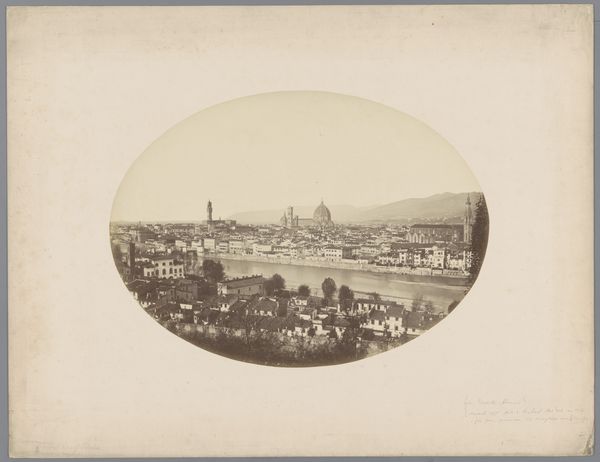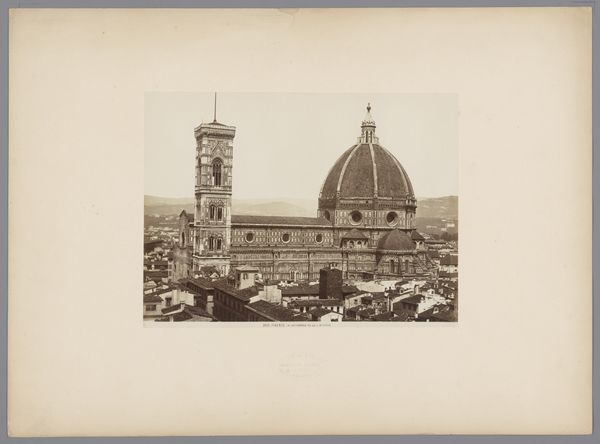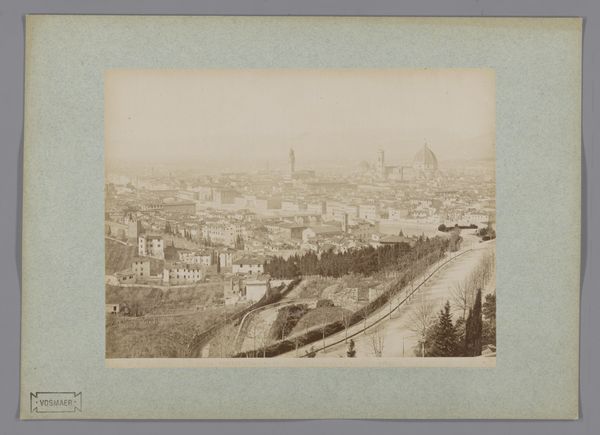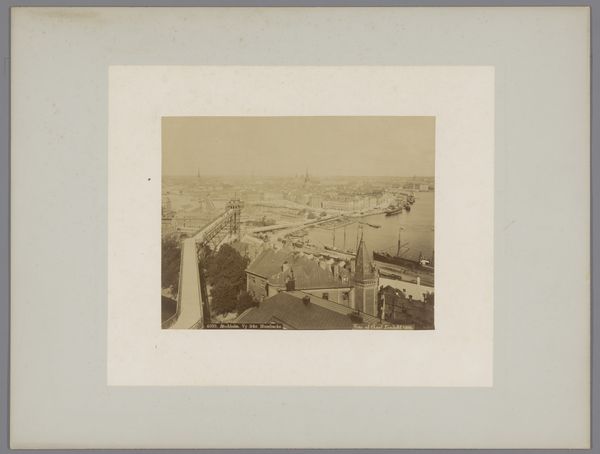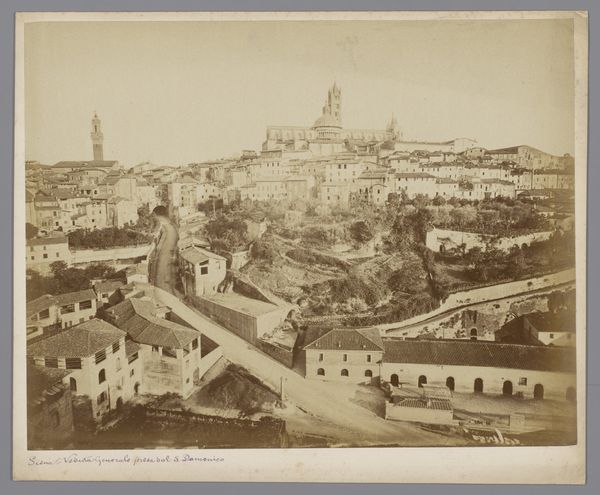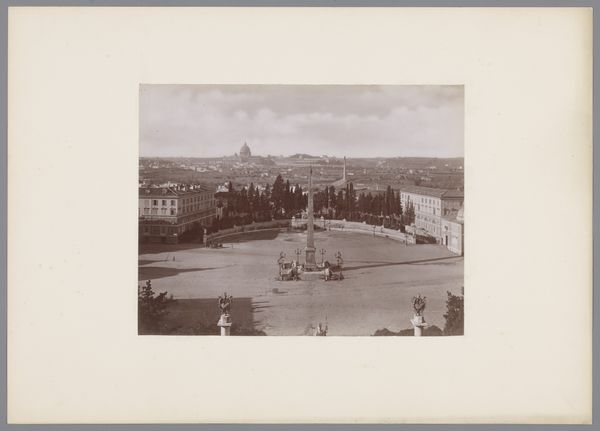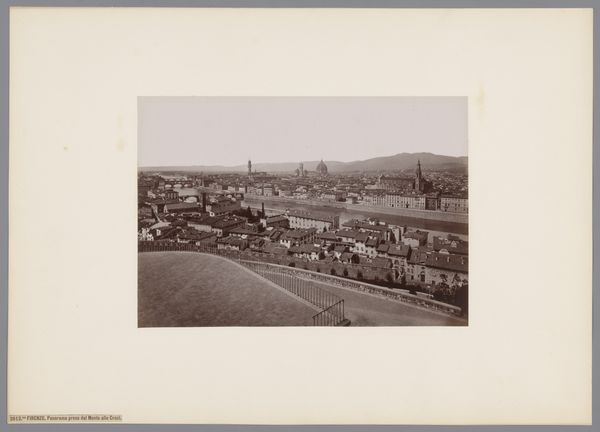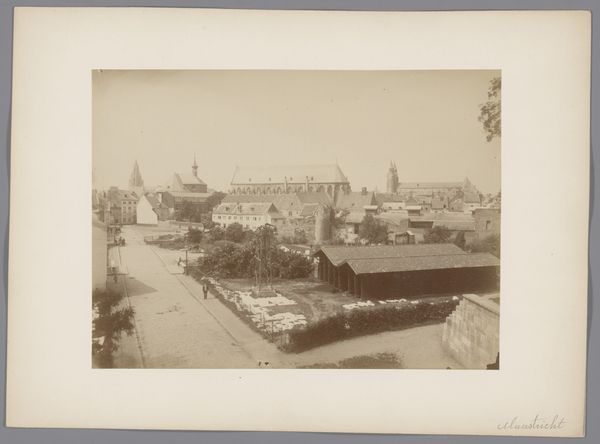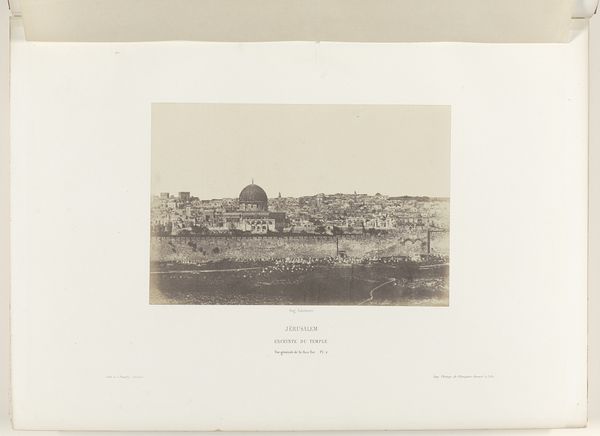
Copyright: Public Domain
Curator: This captivating cityscape before us is titled "Florence, Panorama of S. Miniato, No. 1801," attributed to Giorgio Sommer, and was likely captured between 1870 and 1880. It’s an albumen print, showcasing early photographic artistry. What's your immediate take on it? Editor: The sheer stillness is what strikes me. It feels less like a document of a bustling city and more like a painted ideal. Almost sepulchral with its subdued tones, like viewing a memory faded by time. Curator: That’s insightful. Giorgio Sommer, though of German origin, spent much of his career in Italy, meticulously documenting its urban landscapes and cultural landmarks. His work carries the imprint of the 19th-century desire to record and codify the world, turning it into something knowable through images. Editor: But even then, photography wasn’t simply objective, was it? Look at the way the light seems almost soft-focused, creating an aesthetic that idealizes the pre-industrial city. It feels romantic and curated rather than a straightforward representation of Florence, raising questions about who had access to that romantic ideal and who was left out. Curator: Indeed. There's an intentional selection and framing at play. We see the iconic structures, the Duomo and Palazzo Vecchio, which function as symbols of civic pride and the enduring legacy of Florentine art and power. This is very much a staged vision, reinforcing pre-existing notions of cultural significance. Editor: It also brings up questions of urban development at that time. What aspects of daily Florentine life aren’t shown in Sommer's picture? Who lives in these houses, what kind of labor creates their economy, who pollutes their river, where did the photographer have to stand in order to compose the perspective on that river and the whole of society in its purview? Those sorts of absent presences, those hidden voices, often tell a story louder than anything framed inside it. Curator: Absolutely. Photography like this had a significant impact on shaping how the world was understood and experienced by a burgeoning tourist economy. By circulating idealized images of places like Florence, Sommer, perhaps inadvertently, participated in constructing and solidifying those perceptions. Editor: Precisely. Ultimately, it reminds us to look critically at even the seemingly most neutral representations. Visual culture is often less of a window and more of a carefully crafted mirror, showing us reflections of ourselves and what we value at any particular moment in time. Curator: Well said. I am always drawn to how artworks remind me that images are more about shaping understandings than capturing raw reality.
Comments
No comments
Be the first to comment and join the conversation on the ultimate creative platform.
